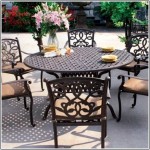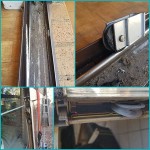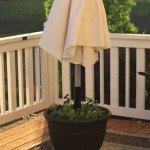French Patio Door Glass Replacement: A Comprehensive Guide
French patio doors offer an elegant connection between interior living spaces and outdoor areas. Their expansive glass panels provide ample natural light and scenic views. However, these large glass panels are vulnerable to damage from impacts, weather, and general wear and tear. When the glass in a French patio door breaks, cracks, or becomes fogged due to seal failure, replacement becomes necessary. This article provides a detailed overview of the French patio door glass replacement process, covering various aspects from assessing the damage to selecting the right replacement glass and understanding the installation procedure.
Understanding the anatomy of a French patio door is crucial before attempting any repairs or replacements. These doors typically consist of two main components: the door frame and the glass panels. The frame is usually made of wood, vinyl, aluminum, or a composite material. The glass panels are secured within the frame using glazing beads or a similar retaining system. The glass itself may be single-pane, double-pane (insulated glass units or IGUs), or even triple-pane, depending on the door's energy efficiency rating and age. When addressing glass replacement, it is important to correctly identify the type of glass and its dimensions.
Assessing the Damage and Determining the Need for Replacement
The first step in the process involves a thorough assessment of the damage. Common issues include cracks, chips, shattered glass, and fogging between the panes of an IGU. A small chip or crack might be tempting to ignore, but even minor damage can compromise the structural integrity of the glass and potentially lead to further cracking. Fogging between the panes indicates a seal failure in the IGU, allowing moisture to accumulate and obstruct the view. In such cases, glass replacement is the only effective solution. It is crucial to differentiate between minor cosmetic blemishes and serious structural damage. A professional inspection can assist in determining the extent of the damage and the necessity of replacement.
Furthermore, consider the safety implications of damaged glass. Shattered glass poses an obvious hazard, but even cracked or compromised glass can be unstable and prone to sudden failure. If there are young children or pets in the household, the risk of injury increases significantly. Addressing the issue promptly is essential to maintain a safe living environment. Beyond the immediate safety concerns, damaged glass can also compromise the energy efficiency of the door, leading to increased heating and cooling costs.
Another aspect to consider is the overall aesthetic appeal of the door. A damaged or fogged glass panel can detract from the beauty of the door and the surrounding space. Replacing the glass can significantly improve the appearance of the door and enhance the overall value of the property. Delaying the replacement can lead to further deterioration of the door frame due to moisture intrusion or other environmental factors.
Selecting the Right Replacement Glass
Choosing the appropriate replacement glass is a critical step in the process. The type of glass required depends on several factors, including the door's construction, the desired energy efficiency, and the homeowner's preferences. Here's a breakdown of common glass options:
Single-Pane Glass: This is the simplest and least expensive option. However, it offers minimal insulation and is not suitable for energy-efficient homes. Single-pane glass is typically used in older homes or in situations where energy efficiency is not a primary concern.
Double-Pane Glass (Insulated Glass Units - IGUs): IGUs consist of two panes of glass separated by a spacer and sealed to create an air or gas-filled gap. This gap provides significantly improved insulation compared to single-pane glass. IGUs are a common choice for modern French patio doors.
Low-E Glass: Low-E (low-emissivity) glass is coated with a thin, transparent layer of metallic oxide that reduces heat transfer through the glass. This type of glass helps to keep homes cooler in the summer and warmer in the winter, resulting in lower energy bills. Low-E coatings are often applied to IGUs to enhance their energy efficiency.
Tempered Glass: Tempered glass is heat-treated to make it much stronger than standard annealed glass. It is also designed to shatter into small, blunt fragments instead of sharp shards, making it a safer option for patio doors. Building codes often require tempered glass in patio doors and other areas where there is a risk of impact.
Laminated Glass: Laminated glass consists of two or more layers of glass bonded together with a plastic interlayer. This type of glass is extremely strong and resistant to shattering. It also provides excellent sound insulation and UV protection. Laminated glass is often used in high-security applications.
When selecting the replacement glass, it is essential to accurately measure the dimensions of the existing glass. This can be done using a measuring tape, or by having a professional measure the glass for you. It is also important to specify the thickness of the glass and the type of spacer used in an IGU. Providing accurate information ensures that the replacement glass fits properly and provides the desired performance.
Consider the aesthetic options as well. Glass can be clear, tinted, or textured. Tinted glass can reduce glare and heat gain, while textured glass can provide privacy. Decorative glass options, such as frosted or etched glass, can add a unique design element to the door. The choice of glass should complement the overall style of the home and meet the homeowner's specific needs.
The French Patio Door Glass Replacement Process
The actual process of replacing the glass in a French patio door involves several steps, and it is often best left to professionals with the necessary tools and experience. However, understanding the process can help homeowners make informed decisions and ensure that the job is done correctly.
Preparation: The first step is to prepare the work area by covering the floor with drop cloths and gathering the necessary tools. These tools typically include a putty knife or glass scraper, a screwdriver, a hammer, safety glasses, gloves, and a vacuum cleaner. Ensure adequate lighting to facilitate a clear view of the work area.
Removing the Old Glass: The next step is to carefully remove the old glass. This typically involves removing the glazing beads or other retaining hardware that holds the glass in place. The glazing beads may be held in place with nails, screws, or adhesive. Use the appropriate tool to remove the fasteners without damaging the door frame. Once the glazing beads are removed, carefully pry the old glass out of the frame. Use caution when handling broken glass to avoid injury. Wear safety glasses and gloves, and dispose of the broken glass properly.
Cleaning the Frame: After removing the old glass, thoroughly clean the frame. Remove any old putty, caulk, or debris. Inspect the frame for damage and repair any cracks or rot before installing the new glass. A clean and sound frame ensures a proper seal and prevents future problems.
Installing the New Glass: With the frame prepared, the new glass can be installed. Apply a bead of caulk or sealant around the perimeter of the frame to create a watertight seal. Carefully position the new glass in the frame and press it firmly into the caulk. Ensure that the glass is centered and properly aligned. Reinstall the glazing beads or other retaining hardware to secure the glass in place. Use the appropriate fasteners and avoid overtightening, which could crack the glass.
Finishing Touches: Once the glass is installed and secured, apply a bead of caulk around the edges of the glazing beads to create a weather-tight seal. Clean any excess caulk with a damp cloth. Inspect the installation to ensure that the glass is properly sealed and that there are no gaps or leaks. If necessary, touch up the paint or finish on the door frame to complete the job.
While a handy homeowner might attempt this project, it's generally recommended to hire a professional for French patio door glass replacement. Professionals possess the expertise and specialized tools to ensure a safe and proper installation, preventing common issues like leaks, improper sealing, and damage to the door frame. They can also handle the disposal of the old glass safely and efficiently.
Furthermore, a professional installation often comes with a warranty, providing peace of mind and protection against potential defects. This is especially important for IGUs, where seal failure can lead to fogging and reduced energy efficiency. A warranty can save significant costs in the long run by covering the cost of replacement if any issues arise.
In conclusion, replacing the glass in a French patio door is a complex task that requires careful assessment, proper glass selection, and precise installation. Whether opting for a DIY approach or hiring a professional, understanding the key steps involved can help ensure a successful outcome. Prioritizing safety, energy efficiency, and aesthetic appeal will contribute to a more comfortable and valuable living space.

Replacement Sliding French Wood Patio Doors Renewal By Andersen

Patio Door Replacement And Glass Repair Valleywide

Replacement Sliding French Wood Patio Doors Renewal By Andersen

Schedule An Estimate For Patio Door Installation Glass Doctor

Patio Door Replacement Marvin

Replacement Sliding French Wood Patio Doors Renewal By Andersen

Patio Door Replacement And Installation Window World

A Quick Guide To Patio Door Replacement Top 3 Options

Replace Sliding Doors With French Marvin Replacement

Replacement French Wood Patio Doors Renewal By Andersen








